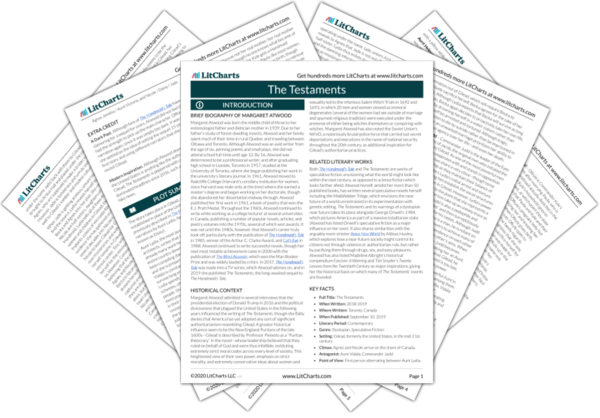The Wall encircles the city in which the story is set and functions as a symbol of Gilead’s authoritarian power and control over its citizens. The Wall’s representation works both physically and psychologically. Physically, the Wall makes it far more difficult for people to escape from the city, since they are enclosed and must either climb it or pass through multiple Angel checkpoints to make their escape. Psychologically, the Wall is a constant reminder of Gilead’s threat of severe punishment, since executed criminals are often hung from the Wall and left there for the public to see. The Wall’s physical enclosure is thus reinforced by the psychological enclosure Gilead inflicts upon its citizens, threatening such extreme punishment that people are kept in a constant state of fear, too afraid to question Gilead’s right to rule or speak out about its injustices.
When Nicole, posing with Agnes as a Pearl Girl, escapes to Canada, Aunt Lydia tells Helena that she must’ve climbed the Wall. Although this is technically a lie, since Nicole passed through the gates and the checkpoints in disguise, symbolically it is the truth: Nicole has managed to overcome both the physical and mental confines of Gilead and is running toward freedom in Canada, armed with Lydia’s damning cache of information about Gilead’s injustices.








